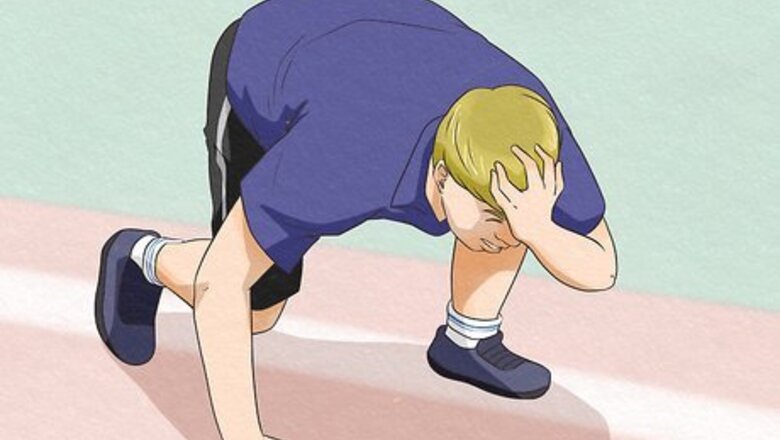
views
Falling Properly
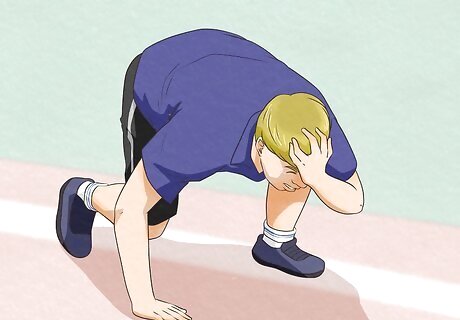
Protect your head. The most important body part that you need to protect in a fall is your head. Head injuries can be very serious, even deadly. Make sure you prioritize protecting your head as you fall by properly positioning it. Tuck your your chin down, lowering your head. If falling down, face first, turn your head to the side. Bring your arms up to head level for additional protection. Put them in front of your head if falling forwards or behind your head if falling backwards. If you are taking anticoagulants or blood thinners and fall and hit your head, this may result in a dangerous and life-threatening bleed inside your skull. Call your doctor, who may tell you to go to the hospital for a CT scan.
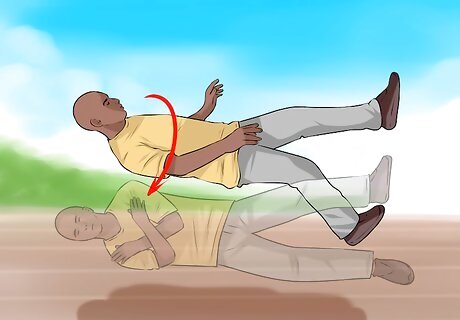
Turn as you fall. If you are falling either straight forward or straight backwards, try to turn your body so you land on your side. Falling directly on your back can cause serious injury to it. A frontal fall can cause damage to the head, face, and arms. By landing on your side you can reduce the chance of injury from high distances (for example, one way vertical paths).
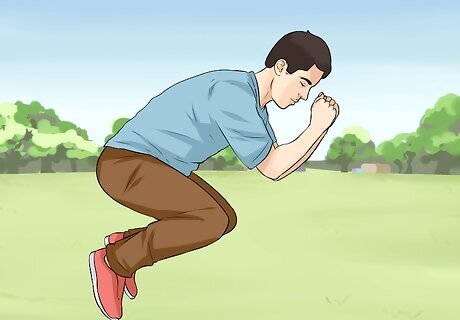
Keep arms and legs bent. It may be tempting to try and catch yourself fully as you fall with your arms. However, landing with your arms straight out and absorbing the full force of the fall with them can cause injury. Try keeping both arms and legs slightly bent as you fall. Landing fully on your arms in an attempt to catch yourself can break both your wrists and arms.
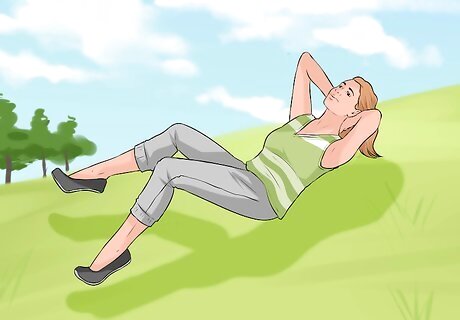
Stay loose. Tensing up during a fall can increase the chances of sustaining an injury. The tension in your body won't allow for the absorption of force from the fall. Instead of spreading the impact out over a flexible body, the parts that were kept taut are more likely to break instead of going with the motion. You can try breathing out as you fall to help keep your body relaxed.
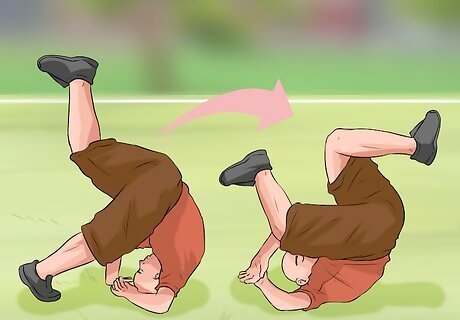
Roll out of the impact. If you are able, a good technique to dissipate the force of a fall is to roll into it. By rolling, you send the energy of the fall into the roll, rather than having your body absorb the impact. Since the technique is difficult, you may want to practice falling and rolling at a gym or somewhere with padded and cushioned floors. Start in a low squat position. Lean forward and place your palms flat on the ground in front of you. Push off the ground with your legs and move your weight forwards. Your legs will go over your head. Keep your back rounded and gently try to land on a shoulder. Let the momentum carry you through the roll and back up onto your feet.
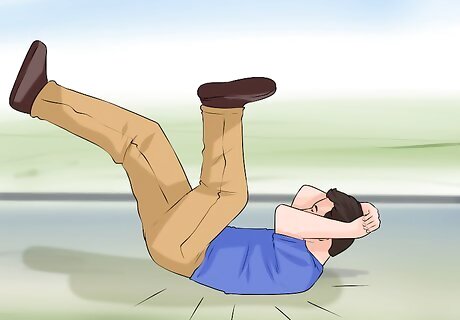
Spread out the force of the fall. A big part of falling safely is to spread out the force of the impact over a large area of your body. Falling on a single point will result in that area taking most of the damage. By spreading out the impact, you reduce the chance of serious injury to a single part of the body.
Preventing Falls
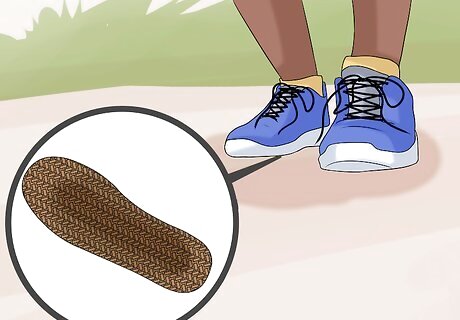
Wear proper footwear. If you work or walk in an environment where slipping hazards are present, you will want to wear slip-resistant shoes. These shoes are specially designed to grip surfaces and prevent falls, even if those surfaces are slick or wet. Most footwear of this type will be labeled as “slip-resistant.”
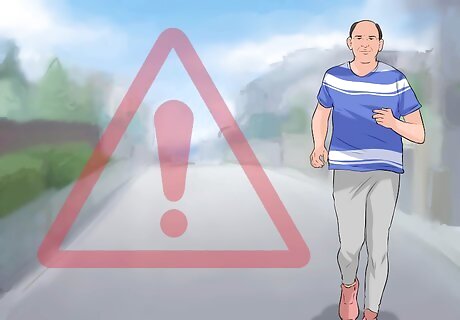
Pay attention when you walk. As you walk, pay careful attention to the speed at which you are walking and where you're stepping. The faster you walk or run, the more likely you are to fall, especially if the ground is suddenly or surprisingly uneven. By slowing down and being aware of the environment, you can lower the chances of falling. Be careful walking or running in any areas where the ground may be uneven. Pay attention when taking the stairs and always use the hand rail.
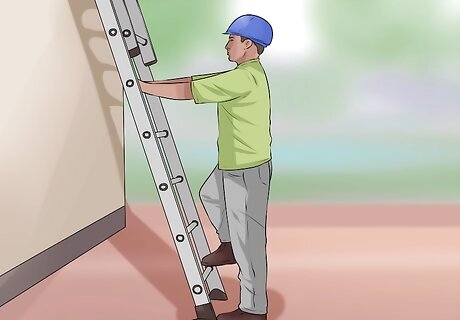
Use proper safety equipment. If you are performing any task that requires the use of a ladder or similar device, always practice proper safety. Read over any operation manual or safety instructions to make sure you are using the device properly. Always check to make sure any ladder or step stool is secure and is in good working order. Never ride on a vehicle unsafely. Always enter or mount a vehicle slowly and carefully.
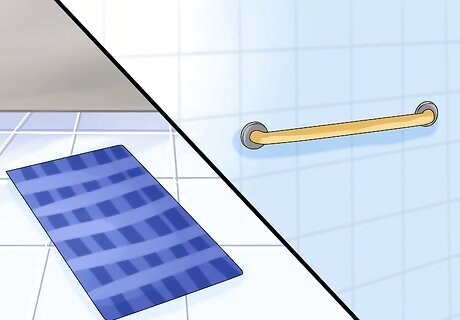
Create a safe environment. Whether at work or at home, take a few steps to create a safe environment that removes the most common tripping hazards. Making frequently used rooms and spaces safe from trip hazards can greatly reduce your chances of falling. Review the following list for some helpful tips: Always close drawers after you are done with them. Don't leave cords or wires in walkways. Keep the area well lit. Walk slowly over slippery or dangerous areas, taking small controlled steps. Consider relocating if you live somewhere with steep stairs and falling is a concern. Otherwise, make sure you have handrails or a banister. Use non-slip bath mats in the tub and bathroom and consider installing a grab bar in the tub. Remove small throw rugs or use double-sided tape to make sure they don't flip up or slip.
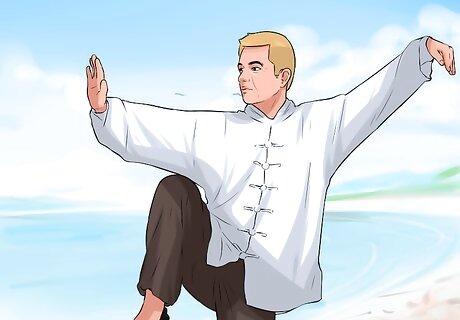
Improve your strength and balance with exercise. Weak legs and muscles can increase your chance of falling. Gentle exercises like Tai Chi can improve strength and balance, making falls less likely.

Be aware of medications that might affect your balance. Some medications can cause dizziness or drowsiness, which could increase your chances of a fall. Talk to your doctor about your medications (sometimes the interaction of several medications might lead to these side effects). She may be able to prescribe you something else.




















Comments
0 comment